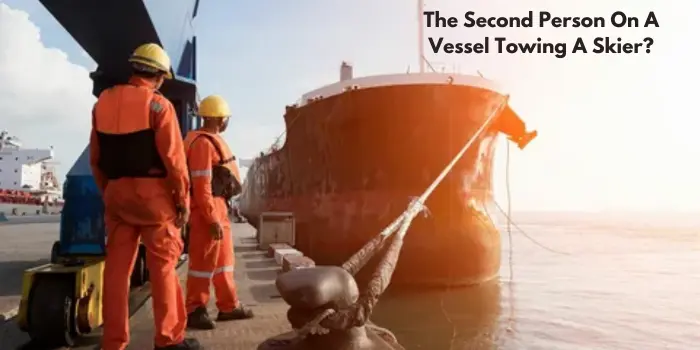The number one position of the second person, frequently called the spotter or observer, on a vessel towing a skier is to screen the skier’s safety and speak with the boat operator. This character is responsible for retaining a constant eye on the skier, making sure they’re in proper circumstance and signaling to the boat operator approximately any falls, hand signals, or different essential cues from the skier.
This direct line of communication helps maintain the safety and enjoyment of water skiing activities. While taking part in water exercises, focusing on well-being, similar to what it’s worth in different parts of life is critical, such as when searching for tow trucks near me during roadside emergencies. Additionally, the spotter can help anticipate any immediate dangers or hazards in the water, allowing the operator to take timely action.
Which Is The Safest Area For Towing A Skier?
The safest area for towing a skier is typically in a designated skiing zone or area with minimal boat traffic, wide-open spaces, and away from hazards like docks, buoys, and shallow waters. Calm and clear waters provide the best environment, as they help prevent unnecessary falls or accidents. It is likewise vital to stay away from regions where swimmers, kayakers, or other non-mechanized watercraft might be available.
Towing should be done far from shorelines, rocks, and underwater vegetation to minimize the risk of injury. Just as it’s important to select a safe area for water skiing, one should also consider reliable 24 hour emergency roadside assistance services when on the road, ensuring help is available anytime, just like the way safe towing areas provide a secure environment for water skiing.
In Alabama, Which Action Is Legal When Towing A Water-Skier Behind A Vessel?
In Alabama, specific legal requirements and actions must be followed when towing a water-skier behind a vessel. One of the primary legal requirements is the presence of either a competent observer or a wide-angle rearview mirror. The observer must be at least 12 years old and competent to watch the skier at all times, while the boat operator focuses on safe navigation.
Towing just during light hours, ordinarily between one hour before dawn and one hour after sunset is likewise compulsory. Utilizing endorsed individual buoyancy gadgets (PFDs) by all skiers is expected, as security is a main concern. Moreover, the boat should be of sufficient size and ability to securely tow a skier, abstaining from over-burdening.
Which Action Is Legal When Towing A Water Skier Behind A Vessel?
When towing a water skier behind a vessel, various legal actions are generally required to ensure the safety and legality of the activity. A critical legal action is having a designated observer or a wide-angle rearview mirror on board to monitor the skier’s activity and provide necessary communication with the boat operator. All individuals involved, such as the skier, must put on a U.S. Coast defend-accepted life jacket.
Towing activities should only take place during daylight hours to ensure good visibility. It is likewise fundamental to avoid different boats, swimmers, and impediments to stay away from mishaps. Following state-specific laws and regulations is critical, as they may vary, but the general principle is to prioritize the safety of the skier and everyone on the water.
When A Vessel Is Towing A Skier, What Are The Legal Requirements For Observing That Skier?
Whilst a vessel is towing a skier, criminal requirements normally mandate having a devoted observer on board or a wide-angle rearview replicate to study the skier. The observer’s role is to hold continuous visual touch with the skier, making sure of their protection and proper being. In plenty of jurisdictions, the observer desires to satisfy a minimum age requirement, frequently spherical 12 years vintage, and be capable of talking efficiently with the boat operator.
The observer should watch for signs of distress or falls and signal the operator to slow down or stop if necessary. This arrangement allows the boat operator to focus on navigating safely. The presence of an observer or an approved mirror ensures that any emergency can be quickly addressed, thereby reducing the risk of accidents and enhancing the overall safety of the water skiing activity.
What Is Towing A Water-Skier?
Towing a water-skier includes the usage of a motorized boat to drag a person on skis over water, providing an exciting enjoyment. The skier holds onto a tow rope while being pulled in the back of the vessel.
What Is The Main Role Of The Second Person On A Vessel?
The second person, frequently known as the spotter or observer, video displays units the skier’s protection, communicates with the boat operator, and ensures the skier’s properly-being via signaling if any issues arise.
When Towing Two Skiers At The Same Time?
When towing two skiers concurrently, ensure every skier has a separate tow rope. The observer needs to watch each skier, and the boat ought to have ample energy to safely pull both.
Which Of The Following Is Required When Towing A Person On Water Skis Behind A Boat In Ohio?
In Ohio, an able observer or an extensive-attitude rearview reflection is needed. The observer should keep constant visual touch with the skier, making sure their safety in the course of the activity.
Conclusion
Towing water skiers is a popular and exciting water sport that requires careful attention to safety protocols. A key issue is having a second person, frequently referred to as the observer, on board to ensure the skier’s protection. This man or woman is answerable for monitoring the skier’s circumstance, communicating with the boat operator, and alerting them to any problems. While towing multiple skiers, it is imperative to offer separate tow ropes and make certain the boat has enough electricity for the project.
Different states, like Ohio, have unique requirements, such as having a capable observer or an accredited reflector to reveal the skier. These safety measures are indispensable to save you from injuries and make certain that everybody involved has a secure and exciting experience on the water.



